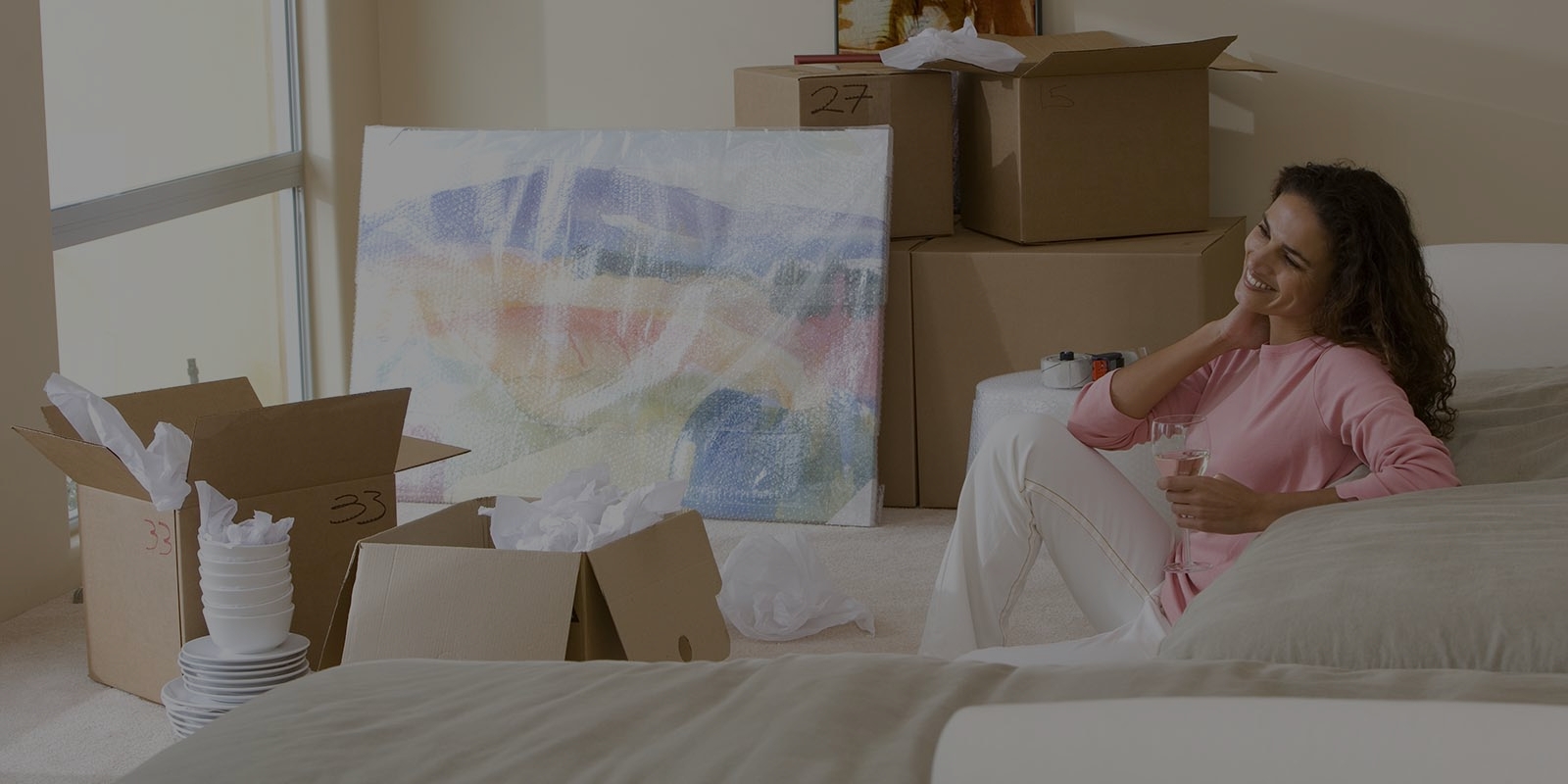Guard Your Sofa: Essential Storage Techniques
Posted on 17/05/2025
Guard Your Sofa: Essential Storage Techniques for Long-Lasting Furniture
Your sofa isn't just a piece of furniture; it's the centerpiece of your living room, a spot for relaxation, and a reflection of your home's style. Keeping it in pristine condition is vital, especially when you need to store it for any length of time. In this comprehensive guide, we'll reveal effective sofa protection techniques and shed light on the best ways to guard your couch during both short- and long-term storage.

Why Protecting Your Sofa in Storage is Crucial
When storing your beloved sofa, you face a host of potential threats: dust, moisture, pests, sunlight, and accidental damage, just to name a few. Whether you're storing a sofa during a move or simply making space for a renovation, applying proactive protection measures ensures your furniture's longevity and preserves its aesthetic appeal.
Common Risks for Sofa Storage
- Moisture leading to mold and mildew growth
- Pest infestations such as rodents or insects
- Dust and debris accumulation
- Physical damage from bumps, scrapes, or stacking
- Sunlight fading the upholstery fabric
- Unpleasant odors infiltrating the cushions and frame
Being aware of these risks, it's essential to follow sofa storage best practices to keep your couch safe and sound.
Preparing Your Sofa for Storage
Proper preparation is the foundation of safe sofa storage. Not only does this reduce the risk of damage, but it also makes the sofa easier to handle and store.
Step-by-Step Sofa Preparation
- Clean Thoroughly: Start by vacuuming every nook and cranny to remove dust, crumbs, and pet hair. For fabric sofas, use a suitable upholstery cleaner; for leather sofas, opt for a proper leather conditioner.
- Disassemble If Possible: Detach sofa legs, cushions, and armrests to make storage simpler. Keep screws and small parts in a labeled bag for easy reassembly.
- Dry Completely: Ensure your sofa is dry before storage. Even slight dampness can foster mold and mildew.
- Wrap Cushions Separately: This prevents them from becoming misshapen or trapping odors over time.
Tip:
It's wise to snap pictures of your disassembled sofa. This makes the reassembly process far easier later on.
Choosing the Right Storage Space for Your Sofa
Where you store your sofa makes a significant difference in its longevity. Let's explore several optimal couch storage environments.
Climate-Controlled Units: The Superior Option
Climate-controlled storage units are designed to maintain a consistent temperature and humidity level, offering ideal protection for wooden frames, leather, and fabric upholstery alike. These units prevent:
- Expansion and contraction of wood due to temperature swings
- Mold and mildew caused by high humidity
- Deterioration of leather and fading of fabric
If budget allows, climate-controlled storage is worth its weight in gold for preserving your sofa.
Standard Storage Units: What to Watch Out For
Non-climate-controlled units are more susceptible to outdoor temperature and humidity changes. If you must use one of these, make sure to:
- Choose a unit on higher ground to avoid water seepage during rainy seasons
- Inspect for leaks or pest signs before moving your sofa in
- Use additional layers of protection (see below)
Essential Wrapping and Covering Techniques
Covering your sofa properly is a vital defensive measure. The right wrapping materials not only deter dust but also shield against moisture and scratches.
The Best Sofa Cover Materials
- Breathable Moving Blankets: These protect against physical damage while allowing air circulation, which is crucial in preventing moisture buildup.
- Plastic Wrap: Use cautiously--plastic creates a vapor barrier that traps moisture. Wrap lightly so air can still circulate.
- Fitted Sofa Covers: Specially designed for storage, these covers keep dust and pests out while preserving the sofa's structure.
- Old Bedsheets: An affordable option that works for short-term storage and blocks dust without trapping too much moisture.
How to Wrap a Sofa for Storage
- Place moving blankets over the entire sofa, tucking them around arms and corners.
- Add a breathable furniture cover or lightweight plastic wrap, especially for long-term storage or moving.
- Secure the covering with packing tape or stretch wrap--but avoid taping directly onto the sofa's surface to prevent sticky residue.
- Wrap detachable legs, arms, and cushions separately for maximum protection.
Storing Sofas Off the Ground: Why and How
Even the best storage spaces can experience leaks or condensation. Lifting your sofa off the floor offers an extra shield against water damage and pest infestation.
- Pallets: Standard wood or plastic pallets from hardware stores provide excellent elevation.
- Furniture Blocks: Purpose-built risers designed for heavier items like sofas and sectionals.
- Plastic Sheeting Underneath: As a last resort, lay down heavy-duty plastic to create a barrier between the sofa and the floor.
Make sure the support is stable and level to avoid warping your sofa's frame during storage.
Arranging Your Sofa in Storage: Maximizing Safety
How you position your sofa within a storage unit is often overlooked but essential for long-term protection.
Best Practices for Safe Arrangement
- Store Upright: Keep your sofa standing as it would naturally sit in your living room. Never stand it on one end for extended periods as this strains the frame.
- Avoid Stacking Items On Top: Placing boxes or other furniture atop your sofa can crush cushions, warp frames, and puncture upholstery.
- Leave Breathing Room: Don't pack your unit too tightly; allow air to circulate freely around and behind your sofa for moisture prevention.
Separating Sofa Parts
If possible, store detachable components (like legs and cushions) in a separate, labeled box. This makes the main frame lighter and reduces the risk of stress on solder joints or wood glue.
Protecting Sofa Upholstery: Fabric vs Leather
Both fabric and leather sofas need attentive care, but each material requires specific furniture storage solutions.
Fabric Sofa Storage Tips
- Clean and Vacuum: Remove all dirt before covering.
- Choose Breathable Covers: Fabric needs air circulation to prevent mold and odors.
- Keep Away from Direct Sunlight: Fading can occur even during storage if your unit has windows or translucent panels.
Leather Sofa Storage Guidelines
- Condition the Leather: Apply a leather conditioner to prevent drying and cracking, especially for long-term storage.
- Use Soft, Breathable Covers: Avoid plastic that could stick, instead opt for soft blankets or tailored covers.
- Maintain Humidity Levels: Leather is sensitive to dry and overly humid climates, so climate-control is especially vital here.
Bonus Tips for Superior Sofa Storage
- Add Moisture Absorbers: Silica gel packets or desiccant containers inside the storage unit can absorb excess humidity.
- Repel Pests: Place dryer sheets or natural repellents like cedar chips to keep insects and rodents at bay.
- Inspect Regularly: If storage is accessible, check your sofa every couple of months to ensure everything remains in order.
- Label Components: If you've taken your sofa apart, use labels for each part to make reassembly hassle-free.
- Store Vertically, Not on End: Always keep your sofa sitting as it would in use. Avoid tipping on its sides for lengthy periods.
Unpacking Your Sofa: The Safe Way to Restore It
Once it's time to bring your sofa out of storage, take care so it remains in top condition.
- Move gently and avoid dragging, which can dislodge joints or tear upholstery.
- Remove coverings outdoors or in a well-ventilated area to shake off any dust.
- Allow your sofa to air out for a day before using it, especially if it has that 'stored' smell.
- Reassemble with Care: Refer to your stored photos and labeled parts as you put the sofa back together.
- Finish with a thorough cleaning and (for leather), another round of conditioning.

Sofa Storage FAQs
How long can you store a sofa without damage?
With proper sofa storage techniques, your furniture can remain protected for years. The key is regular inspections, climate control, and complete covering.
What materials should never be used for sofa covers?
Don't use heavy plastic wraps for long-term storage--they trap moisture, leading to mold and mildew. Also avoid dark tarps for leather sofas which can transfer dyes.
Is self-storage safe for expensive or antique sofas?
Absolutely, as long as you prioritize climate-controlled storage, gentle wrapping, and regular inspections. It may also be wise to insure high-value pieces.
Can you stack sofas in a storage unit?
Stacking one sofa on another is never recommended. This can bend frames and permanently deform cushions. Always keep each sofa upright and freestanding.
Conclusion: Preserve Your Comfort For Years to Come
Storing your sofa doesn't have to be a stressful experience. Whether you're protecting a beloved family couch or a high-end designer piece, these essential sofa storage tips give you the blueprint for success. Remember: clean, dry, wrap, elevate, inspect, and your sofa will welcome you back as comfortably as ever!
Apply these essential storage solutions and guard your sofa against all the risks associated with storage--ensuring it remains a centerpiece in your home for many years to come.







